Business
A Complete Information of Global Unique Device Identification Database GUDID

Where can hospitals, clinicians, patients, researchers and interested stakeholders access information about a particular medical device? The Global Unique Device Identification Database (GUDID Services), administered by the FDA, serves as this database by providing a comprehensive reference catalog for each medical device with a Unique Device Identifier (UDI).
The database only includes information important to the identification of devices and does not include any information identifying a patient. All 64 data elements required by 21 CFR 830.310 (directing electronic records to be maintained or submitted to the FDA) are included.
Some of the key benefits is the ability to facilitate quick and accurate medical device identification, removing potential confusion about device use. High standards for accurate data to be submitted and ensuring product accuracy for downstream users is also another crucial benefit. Top-tier device manufacturers are pairing the UDI together with the digital thread for end-to-end traceability of their data.
History of GUDID
The FDA established the UDI system in 2013, requiring medical devices to include a device label in a machine and human-readable format. Within the UDI system, GUDID was created as a foundational database used to store medical device product information associated with the UDI. The database officially launched in December 2013, with the public access portal, AccessGUDID, available in May 2015.
Data submission requirements have been deciphered by the medical device risk class, with various deadlines for compliance. Class I medical devices were originally required to be submitted to the GUDID by September 24, 2020, however, unforeseen supply chain shortages from the pandemic delayed this submission requirement to September 24, 2022. See the timeline, below.
- September 24, 2014 – Class III devices
- September 24, 2015 – Implantable, life-supporting, or life-sustaining (I/LS/LS) devices
- September 24, 2016 – Class II devices
- September 24, 2022 – Class I devices
Who Needs to Submit Data to the GUDID?
Mandated by the FDA, medical device labelers are required to submit data records for medical devices marketed in the United States to the GUDID. The FDA Final Rule provides a thorough definition of a labeler. As defined, the labeler is the entity that applies or modifies the label and brings the device to market under its brand. Typically, this consists of the medical device manufacturer, however it may also be the specification developer, device distributor, reprocessor, repackager or relabeler. The regulatory or compliance team of a medical device company is usually responsible for determining if they constitute as the labeler, per FDA’s definition.
If more than one entity is involved in bringing a medical device product to the market, the labeler responsible for submitting product data must define this joint venture in a written agreement. Duplicate submissions should be avoided and failure to submit product data altogether may result in both entities being held accountable to the FDA.
Also Read: To know the best employee engagement software read the blog.
What Data Must Be Submitted?
A total of 64 data elements are required for submission, with 57 submitted by the labeler and 7 populated by the FDA. The FDA has provided a spreadsheet of data requirements. Note, only the Device Identifier (DI) portion of a UDI code is submitted to the GUDID, per FDA guidance.
The required specifications for GUDID submission embody all of the device information available in the UDI, including a detailed device description and version/model, Issuing Agency, labeler company’s name, address and DUNS code. Additional information is also required per submission, including some of the following:
Commercial distribution – Determines when a record would be publicly available on AccessGUDID, whether the device is in commercial distribution, and when the device is no longer offered for commercial distribution by the labeler on record.
Alternative or additional identifiers – Indicates if the device is exempt from Direct Marking (DM) requirements under 21 CFR 801.45, if the DM DI Number is different than the Primary DI Number and what the secondary DI, previous DI, or package DI is.
Customer contact – Phone and email address of a customer service contact is required so patients and consumers can ask any device-related questions.
Premarket – Determines if the device is exempt from premarket submission or the FDA premarket submission number.
FDA product code and listing – Both the FDA product code (a categorization for devices) and Product Code Name (associated with the three-letter Product Code) are required in addition to the listing number, which is assigned by FDA during registration and listing of all devices in commercial distribution, regardless of pre-market authorization requirements.
Storage, handling and sterilization – Identifies device storage and handling requirements (such as temperature) and sterilization specifications including, packaged as sterile or requires sterilization prior to use.
Wants to Read More About: barcode services
Preparing for Submission to GUDID
A critical prerequisite step for submitting device data to the FDA begins with establishing a GUDID account. To do so you will need to decide how many GUDID accounts are needed. Each account is tied to a separate Labeler Organization, such as corporate headquarters. How large is the organizational structure? If it is small to medium-sized, usually only one account is necessary. What about larger companies? Bigger companies may request a single account for all products OR create multiple accounts for differing portfolio segments.
Both Labeler Organizations and Labelers must be sourced in the account application with their Dun & Bradstreet DUNS number. Note, while application for a DUNS number is free, the process may take up to 30 business days.
How to Submit
Organizations must determine how they want to submit data through one of two methods: manual data entry or Health Level 7 (HL7) Structured Product Labeling (SPL). Some considerations include:
Does the company have a small number of records to submit? If so, they may want to enter data into the database manually through the free web interface, although the cost of staff time and expertise needed to enter and validate data should be considered regardless of device amount.
Does the company have a high volume of submissions? If so, they will likely need to submit data in an SPL format, requiring data conversion for submission-ready SPL files (through the FDA Electronic Submissions Gateway (ESG)). In this case, companies can purchase/build software or work with third-party providers, such as Reed Tech, for expertise in both validating and submitting data.
| GUDID Web Application Overview | HL7 SPL File Submission Overview |
| Ideal method for fewer records needed for GUDID submission | Ideal method for several records needed for GUDID submission |
| Requires manual data entry | Allows bulk submission and requires technical knowledge |
Once companies determine their submission method, they must identify GUDID account personnel and request a GUDID account from the FDA. If they want to submit data in an SPL format, the SPL submissions need to be tested (in a separate test account provided by FDA) to ensure submissions flowing through the ESG are successfully imported.
Are You Affected by the Class I Deadline?
Class I and unclassified medical devices required to be labeled with a UDI code must submit product data to the FDA GUDID by September 24, 2022. Medical device companies must first determine if their products are affected by this deadline. Do any of the following conditions apply to you?
- Class I device is distributed to professional healthcare facilities (hospitals, clinics, physician offices, etc.)
- Class I device is intended only for use by healthcare professionals
- Class I device is reused on different patients and reprocessed using high-level disinfection and/or sterilization
- Class I device requires 510(k)
Note there is a Class I GUDID Submission Exception for certain Class I devices that are 510(k) exempt and only sold over the counter to consumers.
Some examples for product types requiring UDI in a professional use, such as a hospital, include hospital beds, stethoscopes, dental instruments and equipment (chairs). Certain consumer use products (such as sunglasses, pill crushers, electronic toothbrushes) require UDI but not GUDID submission. Products sold in both professional settings and over the counter require UDI and include items such as band aids, first aid kids, and dental floss.
Upon determining if a product falls within the Class I submission regulation, FDA compliance for Class I devices includes:
Labeling – The UDI must be on the device product and package labels in a human-readable plain-text and Automatic Id and Data Capture (AIDC) technology, with the date format listing in YYYY-MM-DD (except AIDC date must use Issuing Agency date format)
Direct marking – Multiple use or reprocessed devices must have the UDI permanently marked
Submission to GUIDID – DI & device attributes (57 total) must be submitted to GUDID (through public portal, AccessGUDID)
Reporting and retention – UDI must be included in Annual Reports, DHR, complaints, MDR, recalls, service, tracking, post market surveillance, in addition to electronic record compliance (as part of 21 CFR 11) and a 3-year record retention (even after device is off of the market)
How to Comply with US FDA Class I, GUDID Requirements
A common question I hear from our customers, especially those with Class I medical device products, is “where do we begin?” Here is an implementation summary for you to reference as the Class I submission deadline quickly approaches:
UDI process prep – Determine who in your organization is responsible for UDI submissions and create a UDI governance team. Also identify FDA UDI requirements for your products, evaluate your situation and prepare the UDI environment.
Data prep – Understand what data elements are required, collect source GUDID data as well as normalize and validate data. If needed, you can work with a vendor, such as Reed Tech, to help with this step.
GUDID system and submission – Evaluate, select, and implement a GUDID solution, create FDA GUDID & ESG accounts, submit GUDID data to FDA and verify GUDID submission and publication.
Labeling system – Prepare labeling environment and test labels.
UDI operation – Start production and maintain data and systems, in addition to preparing for international UDI requirements for various health authorities around the globe.
Business
Amazon Courtesy Credit: Understanding and Utilizing It

Amazon courtesy credit, the e-commerce giant, is known for its customer-centric approach and commitment to ensuring a satisfactory shopping experience for its users. One of the ways Amazon achieves this is through its CC policy, aimed at compensating customers for certain inconveniences or issues encountered during their shopping journey.
What is Amazon Courtesy Credit?
Amazon Courtesy Credit (ACC) is a form of compensation provided to customers in recognition of various issues or inconveniences they may experience while shopping on the platform. It serves as a gesture of goodwill from Amazon to maintain customer satisfaction and loyalty.
Instances Eligible for Amazon Courtesy Credit
Late Deliveries
Customers may be eligible for ACC if their orders are delivered later than the estimated delivery date provided at the time of purchase.
Damaged or Defective Items
In cases where items arrive damaged or defective, customers can request ACC as a form of compensation for the inconvenience caused.
Inaccurate Product Descriptions
If customers receive items that do not match the product descriptions or specifications listed on the this website, they may qualify for ACC.
How to Request Amazon Courtesy Credit
Customers can request ACC by contacting Amazon customer support and providing details about the issue they encountered. Amazon representatives will assess the situation and determine if compensation is warranted.
Factors Affecting Amazon Courtesy Credit
Customer History and Engagement
Amazon may take into account a customer’s purchase history, order frequency, and overall engagement with the platform when determining eligibility for ACC.
Order Frequency
Frequent and loyal Amazon customers may receive more favorable consideration for courtesy credit compared to occasional shoppers.
Issue Severity
The severity and impact of the issue experienced by the customer also play a role in determining the amount of CC provided.
Benefits of Amazon Courtesy Credit
Amazon Courtesy Credit offers several benefits to customers, including:
- Compensation for inconvenience or dissatisfaction with the shopping experience.
- Enhanced customer satisfaction and loyalty.
- Reinforcement of Amazon’s commitment to customer service excellence.
Limitations and Considerations
While Amazon Courtesy Credit can help address certain issues encountered by customers, it’s important to note that it may not fully compensate for all inconveniences or dissatisfaction experienced during the shopping process.
Customer Experiences and Feedback
Many Amazon customers have shared their experiences and feedback regarding Amazon Courtesy Credit on various online platforms and forums. Exploring these insights can provide valuable perspectives and tips for navigating the process of requesting and utilizing courtesy credit.
Conclusion
It serves as a valuable tool for maintaining customer satisfaction and loyalty by compensating users for certain issues or inconveniences encountered during their shopping experience. By understanding the eligibility criteria and process for requesting courtesy credit, customers can leverage this benefit to enhance their overall shopping experience on Amazon.
FAQs
How do I request ACC for a late delivery?
- To request it for a late delivery, you can contact Amazon customer support through their website or app. Provide details about your order, including the order number and the estimated delivery date. Amazon representatives will assess the situation and may offer compensation in the form of CC.
What should I do if I receive a damaged or defective item from Amazon?
- If you receive a damaged or defective item from Amazon, you should contact Amazon customer support immediately to report the issue. Provide relevant details such as the order number, item description, and images showing the damage or defect. Amazon will assist you in resolving the issue and may offer CC as compensation.
Is ACC provided automatically, or do I need to request it?
- ACC is not provided automatically. You need to request it by contacting Amazon customer support and explaining the issue you encountered. Amazon representatives will evaluate your request and determine if CC is warranted based on their policies and guidelines.
Can I use ACC for future purchases on the platform?
- Yes, ACC can typically be used for future purchases on the Amazon platform. Once credited to your account, CC can be applied towards the payment of eligible items during checkout. However, it’s essential to check the terms and conditions associated with the Courtesy Credit for any specific limitations or restrictions.
Are there any restrictions or limitations on the use of ACC?
- While It can generally be used for purchases on the platform, there may be certain restrictions or limitations depending on the terms and conditions associated with the credit. For example, Courtesy Credit may have an expiration date or be limited to specific categories of products. It’s advisable to review the terms carefully to understand any restrictions before using the Courtesy Credit.
Business
Your Payment Could Not Be Sent on Cash App: Understanding and Resolving Issues

The article “your payment could not be sent cash app” This app emerged as one of the leading mobile payment platforms, offering users a convenient way to send, receive, and manage money directly from their smartphones. While Cash App provides a seamless payment experience for millions of users, occasional issues may arise, leading to payment failures and frustrations for users.
Understanding Payment Issues on Cash App
Payment issues on Cash App can occur due to various reasons, ranging from technical glitches to user error. When your payment cannot be sent on Cash App, it’s essential to understand the underlying causes and take appropriate steps to resolve the issue promptly.
Common Reasons for Payment Failures
Several factors can contribute to payment failures on Cash App, including insufficient funds, incorrect recipient information, network connectivity issues, and security concerns. Identifying the specific reason for the payment failure is crucial for resolving the issue effectively.
Steps to Take When Your Payment Cannot be Sent
If your payment could not be sent on Cash App, consider the following steps to troubleshoot the issue:
Check Account Balance:
- Ensure that you have sufficient funds in your Cash App account to cover the payment amount.
Verify Recipient Information:
- Double-check the recipient’s details, including their Cash App username or phone number, to ensure accuracy.
Retry the Payment:
- Attempt to resend the payment after confirming that all details are correct.
Monitor Transaction Status:
- Keep track of the transaction status within the Cash App interface to receive real-time updates on the payment attempt.
Contact Cash App Support:
- If the issue persists, reach out to Cash App support for assistance and further troubleshooting steps.
Contacting Cash App Support
In case of persistent payment issues, contacting Cash App support is the best course of action. Users can reach out to Cash App customer service through the app or website for personalized assistance and resolution of payment-related concerns.
Tips to Avoid Payment Issues on Cash App
To minimize the risk of payment failures and ensure a smooth transaction experience on Cash App, consider the following tips:
- Maintain Sufficient Funds: Regularly check your Cash App balance and add funds as needed to avoid payment failures due to insufficient funds.
- Verify Recipient Details: Always double-check the recipient’s information before initiating a payment to prevent errors and potential delays.
- Stay Updated: Keep your Cash App and device software up to date to benefit from the latest security patches and enhancements.
- Use Secure Networks: Avoid conducting Cash App transactions over unsecured or public Wi-Fi networks to protect your sensitive information from potential security threats.
Ensuring Account Security
In addition to addressing payment issues, prioritizing account security is paramount when using Cash App. Users should enable two-factor authentication, review transaction history regularly, and report any unauthorized activity promptly to safeguard their accounts and financial information.
Comparing Cash App with Other Payment Platforms
While Cash App offers convenience and flexibility for peer-to-peer payments, it’s essential to compare its features and functionality with other payment platforms. By evaluating factors such as transaction fees, security measures, and user experience, users can make informed decisions about which platform best suits their needs.
Conclusion
In conclusion, encountering payment issues on Cash App can be frustrating, but understanding the underlying causes and taking proactive steps can help resolve the problem effectively. By following best practices for account security, verifying recipient information, and staying informed about transaction status, users can minimize the risk of payment failures and enjoy a seamless payment experience on Cash App.
FAQs
What should I do if my payment fails on Cash App?
- If your payment fails on Cash App, double-check the recipient’s information and account balance before attempting to resend the payment. If the issue persists, contact Cash App support for assistance.
How long does it take for Cash App to resolve payment issues?
- The time taken to resolve payment issues on Cash App varies depending on the nature of the problem. In most cases, Cash App strives to address payment concerns promptly and efficiently.
Can I cancel a failed payment on Cash App?
- Yes, users have the option to cancel a failed payment on Cash App before it is successfully processed. However, once a payment is completed, it cannot be canceled or reversed.
Does Cash App charge a fee for failed payments?
- Cash App does not charge a fee for failed payments. However, standard transaction fees may apply when sending money or using certain features within the app.
Are there any limits on the amount of money I can send through Cash App?
- Cash App imposes certain limits on the amount of money users can send and receive within a specified time frame. These limits may vary based on account verification status and other factors.
Business
Ace Hair Extensions & Co Overtakes other beauty brands with it’s new Serum & XL Ace Lace Glue

A brand receiving strong demands for its services must always continue to listen to their customers on what better ways to serve them, which Ace Hair Extensions & Co did last year which led to the innovations of new skus and items.
They have continued to defie luxury downturn and have continued to see new customer satisfactory reviews on forums and social media blogs alike.
Besides their Glue being #1 on the market for bonding strength, The Parfum Serum is made with different plant and root extracts, revealing natural scents and tones that last all day.
It’s Non oily, very silk-like, smells amazing, and is made from organic properties.
Many owning these beautiful products know how much they mean to Ace Hair Extensions & Co when they receive their packages in the mail and see the stylish packaging and attention to detail so they dress their bathroom counters and dressing tables up with their new luxuries.
Experience greatness again https://acehairextensionsco.com/products/hair-serum?variant=40613161369661

 Others10 months ago
Others10 months agoDavid T Bolno: Why Giving Back To The Community Is So Crucial

 Travel10 months ago
Travel10 months agoPractical And Essential Car Interior Accessories To Add Comfort And Convenience To Your Drive

 Travel10 months ago
Travel10 months agoBusiness Visa for CANADA

 Business10 months ago
Business10 months agoTop Reasons Why you Need to Consider Outsourcing Real Estate Photo Editing

 Health10 months ago
Health10 months agoGarlic Is The Best Vegetable To Treat Heart Problems

 Fashion10 months ago
Fashion10 months agoTips For Choosing The Right For Engagement Diamond Rings

 Business10 months ago
Business10 months agoDead And Co Setlist What They Played At The Gorge Amphitheatre

 Tech10 months ago
Tech10 months agoThe Best Way to Never Get Lost: Buy Wayfinding Signs!





